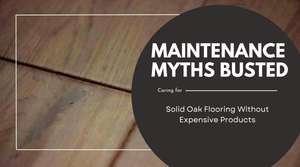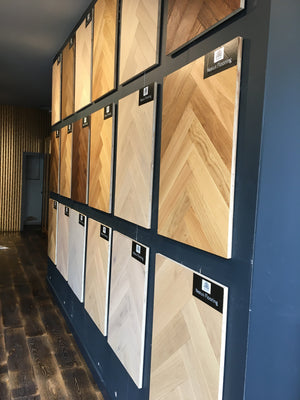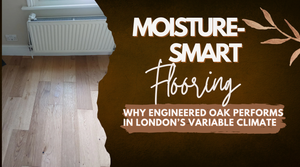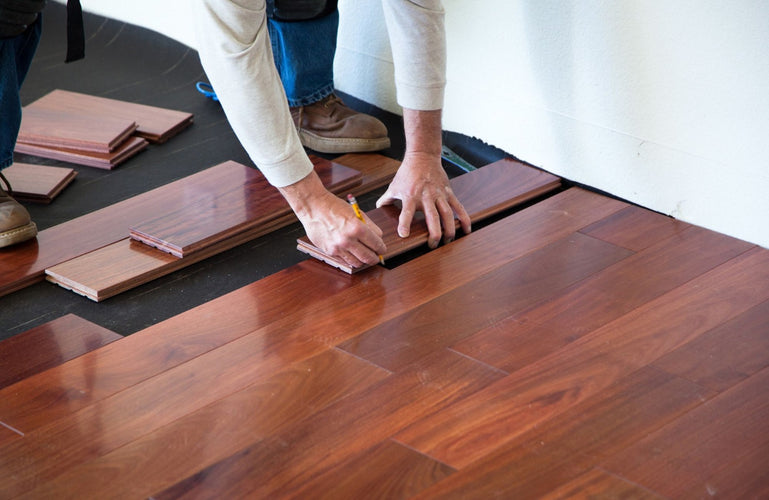When it comes to choosing wooden floors for your home, the decision often comes down to two main competitors i.e. engineered wood flooring and solid wood flooring. The two provide a timeless elegance of real wood, but they vary greatly in structure, performance and fitness for different environments.
Engineer Wooden floors are made of several layers-a top layer with world-hard wood and several main layers with high density fiber plates. This construction provides it more stability and resistance to moisture, which makes it ideal for areas such as kitchens, basements or rooms as a support heating.
On the other hand, solid wooden floors are cooked with a piece of hard wood. It is known for its authenticity and longevity, it can be sanded and refined several times, which combines the shelf life.
This blog will run through the main differences between the two, their professionals and the opposition, where each performs the best, and how you can make the right choice based on the unique needs of your home.
Engineered Wood Flooring vs. Solid Wood Flooring: Understanding the Differences

Among the many options available when it comes to picking the appropriate floor covering for your home, wood is still one of the most enduring and attractive choices. Of the two top choices available in the marketplace today–engineered wood floors and solid wood floors–this pair may appear the same at first glance but are actually very different in terms of structure, performance, and use.
Solid wood floors are constructed using a whole log of hardwood, e.g., oak, maple, or walnut. Engineered wood floors, however, are constructed using layers of different materials. The top layer is genuine hardwood and the inner layer is usually plywood or high-density fibreboard bonded together for stability purposes.
These variations impact each type of floor's performance in different environments, its installation difficulty, and its durability. By understanding these fundamental differences, you will make a more informed choice.
Engineered Wood vs. Solid Hardwood: What’s Best for Your Home?
Deciding between fixed and engineering wood is largely a matter of your home and its relationship. The engineered wood is more stable in areas where temperature and moisture fluctuations occur, so it can work in the kitchen, basement and heating in the floor.
Solid hardwood, on the other hand, adds unmatched authenticity and can be refined and sanded several times. The use is ideal for living rooms, bedrooms or rooms where moisture will not be a factor.
Choices will also rely on your budget, your lifestyle, and you intend to get into your interior.
Engineered Wood Flooring: Advantages & Disadvantages
Advantages of Engineered Wood Flooring
What distinguishes engineered wood floors from other products is its capacity to accommodate variations in temperature and humidity without expanding and shrinking. That makes it an excellent option for areas where hardwood can warp otherwise—such as kitchens, basements, or wherever moisture is at play.
It’s also easy to install from the user’s point of view. Most engineered options feature a click-lock design and are therefore a favorite with DIY enthusiasts. And it’s also more economical than solid hardwood and available in a host of different woods and finishes to cater to varying tastes.
Disadvantages of Engineered Wood Flooring
Granted, however, engineered wood also has its downfalls. Because the hardwood top layer is thinner than the solid wood equivalent, the hardwood can be refinished and sanded a maximum of one or two times—if at all—regardless of the product.
And not all engineered wood is the same. Lower-quality ones mightn’t be as strong, so it’s worth paying a bit more to get a reputable brand with good feedback to make your floors last the distance.
Solid Wood Flooring: Advantages & Disadvantages
Advantages of Solid Wood Flooring
Solid hardwood flooring possess unparalleled beauty and a warm, organic feel when walked upon. They can also be resanded and refinished numerous times over time, enabling you to restore their looks and extend their life.
They are very resilient if well maintained and can also survive over decades, and they are great investments in the long term.
Disadvantages of Solid Wood Flooring
The primary disadvantage of solid wood is its susceptibility to moisture and temperature changes. It can swell or contract and will over time experience gaps or warping if left in areas with high humidity levels.
Installation can also be more labor-intensive and might involve the use of professionals and will cost more in total.
Engineered and Solid Wood Flooring: What to Expect in Durability and Care

Both solid and engineered wood floors are strong, but their longevity will rely upon the conditions and maintenance they receive. Engineered wood will suit more damp environments and possess a core that minimizes the effect of expansion and contraction.
Solid wood will last longer if properly maintained, but costs more and should not be used in moist areas. Both can increase their longevity through regular cleaning, immediate management of spills, and placement in areas where traffic is high and rugs can be used.
Refinishing is also worth thinking about. Solid wood can be refinished numerous times, whereas engineered wood might support a solitary or two refinish treatments depending upon the thickness of the top layer.
Making the Right Choice: Which One is Better for You?
Looks
Engineered and solid wood flooring both feature stunning finishes, textures, and colours. Solid wood promises a deeper grain and richness in look, but engineered ones can replicate this look very successfully.
Installation
Engineered wood is simpler and faster to install and more suitable for use with floating floors. It can also be installed over radiant heating and concrete. Solid wood is typically more difficult to install using a nailing or gluing method.
Which will persist longer?
Solid wood will outlast the other two options since it can be refinished and resanded several times. Good-quality engineered wood can also turn out to be very durable if taken care of properly.
Suitability in Various Rooms
Engineered wood is more suitable and can be installed in kitchens, basements, and areas over underfloor heating. Solid wood is more suitable for dry and stable rooms such as lounges and bedrooms.
Other Considerations
The budget does matter. Engineered wood tends to be more economical and faster to install. Solid hardwood may be the way to go if resale value and the classic look are more important to you.
Ultimately, both options have their benefits. The optimal floor type for your home will rely upon your lifestyle, location, and future needs.






